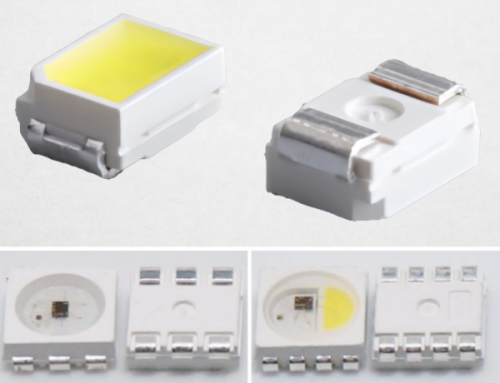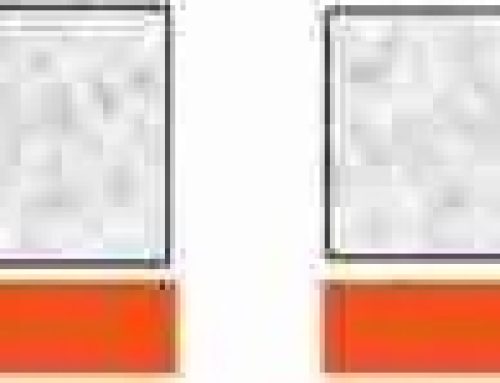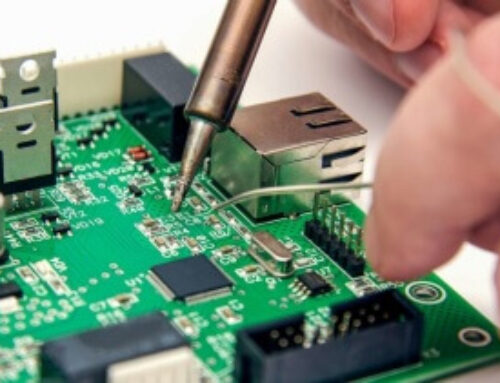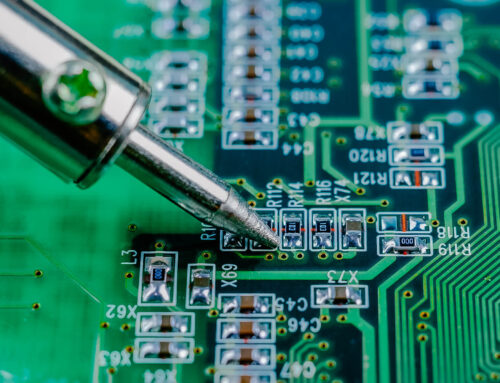PCB vs PCBA
This article introduces the differences in functionality, material composition, and future development trends between PCB boards and PCBA boards.
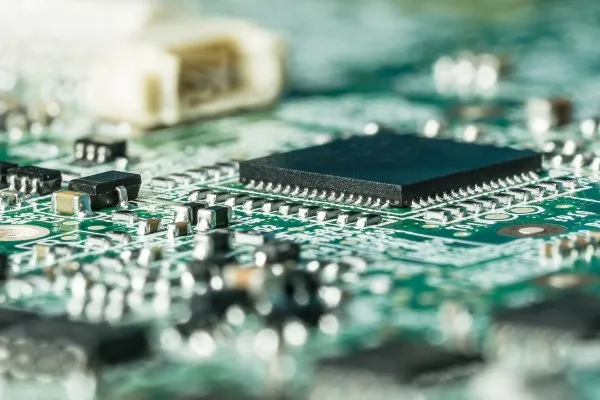
Table of Content
PCB (Printed Circuit Board) VS PCBA (Printed
Circuit Board Assembly) are two concepts that are commonly used in the electronic field. There
are some important differences between them:
PCB (Printed Circuit Board)
A PCB (printed circuit board) is a thin flat substrate that’s made from a nonconductive material,
such as a composite of resin and fiberglass.
Electronic engineers can print circuits that connect electronic components via a conductive path on the
substrate to create complex circuit connections.
PCB boards are used to connect electronic components by using pins and pads.
Functions of PCB
PCB boards have the following important functions:
1. Circuit Connection:PCB allows circuit connections between electronic components.
Wires, pads, and traces can be printed to provide an easy way to connect electronic parts in a logical
way.
2. Electrical Isolation: A non-conductive PCB substrate has an electrical insulation
function, which prevents interference and short circuits.
3. Physical Support:PCB boards not only provide electrical connections but also stable
support for electronic components. It is important to protect electronic component from mechanical
stress and vibrating.
4. Size & layout: Boards can be manufactured and designed according to the specific
requirements of an application. The size and component arrangement can be optimized depending on the
design requirements.
5. Signal Transmission: Wires and traces are used on the PCB to transmit power and
signals. Their design influences the transmission performance, such as the width, speed and
anti-interference.
PCB Board Manufacturing Materials
The following materials are used to make PCB boards:
1. Substrate Material: A PCB’s substrate is made of resin and glass fiber. FR-4 is
a glass-fiber reinforced epoxy resin. It is one of the most popular substrate materials. For special
applications, other materials are used, including metal substrates and ceramic substrates.
2. Conductive Layer: A conductive layer is usually printed on the substrate by a
chemical or physical method. These conductive layerings form pads and circuit connections.
3. Outer Covering Material: Usually, the outer surface of a PCB board is covered with
an outer cover material in order to protect it from physical and environmental damage.
Future Trends in PCB Board Development
PCB manufacturing and design are always evolving to meet the increasing technological needs and
innovations. Here are some trends for the future of PCB.
• Reduced size and increased density: As electronic devices continue to shrink,
PCB boards are becoming smaller and more dense. PCB boards in the future will need to be more compact
and have a higher density, so that they can accommodate more components and functions.
• High frequency circuit requirements: The demand for 5G communication and
high-speed transmission will encourage high-frequency board development. These boards must have
excellent performance in terms of signal integrity, loss and EMI suppression.
• Flexible electronics: PCBs for flexible electronic devices have a bent shape and
are used to make wearable electronics, curved displays and flexible electronics. They will help to
diversify electronic devices.
• Greener Manufacturing: The PCB manufacturing industry has moved in a more green
direction by using reusable materials, and energy-efficient processes in order to reduce the impact on
the environment during the product manufacturing process.
• Increased automation: PCB board manufacturing will continue its move towards
more automated processes in order to improve production efficiency and lower costs.
• Intelligent PCB Boards: Smart boards with embedded sensors and embedded system
will be the core component for Internet of Things applications and smart homes.
Future trends in PCB board sustainability
The PCB board manufacturing industry has begun to adopt a more eco-friendly approach as the society
continues to pay greater attention to environmental protection and sustainability. In the future, this
trend will be more important than ever:
• Reusable Materials:The Circuit Board Manufacturing Industry is adopting reusable
material to reduce waste. This includes recycling and reusing PCB boards, raw materials and waste.
• Low pollution process: The PCB making process reduces environmental pollution.
Reduce the amount of energy and harmful waste generated by using environmentally friendly chemicals.
• Green Design: The design and manufacture of PCB boards is also more focused on
energy conservation and environmental protection. The engineers consider the energy efficiency during
the design phase to reduce energy consumption.
• Remanufacturability: PCB design increasingly considers maintainability and
remanufacturability to extend the life of the equipment and reduce the amount of discarded electronic
equipment.
• Sustainable production practices: Manufacturers adopt sustainable production
practices, including energy conservation, water management, and waste disposal, to reduce adverse
impacts on the environment.
• High Integration: As electronic devices continue to become smaller, PCB boards
must accommodate more functions in a small space.
This requires a higher level of integration and complexity, while also ensuring that there is no
interference between the circuits. This challenge can be addressed by using high-density PCBs and
interconnect technologies.
• Thermal Management: An increase in performance of electronic devices is
accompanied by an increase in power consumption. This causes heat to accumulate. It is important to have
an effective thermal management system in place so that the device doesn’t overheat. Thermally
conductive materials and cooling systems, as well as heat dissipation designs optimized, are solutions.
• Material Innovation: The performance of PCBs is also limited by materials used.
In order to reach higher frequencies, reduce signal loss and improve mechanical performance, future
developments will require further material innovation.
• Maintainability: As PCB complexity increases, repair and maintenance become more
difficult. By designing PCBs to be easier to maintain, you can extend the life of equipment and reduce
waste.
• Stability of the supply chain: PCB production relies on global supply chains,
and unstable factors can lead to shortages in materials and production delays. The importance of supply
chain management and multisource material procurement will increase.
Social Inpact of PCB Boards
PCB development has had a profound effect on the electronics industry, but it also has had positive
impacts on other fields in society.
• Economic Contribution: The PCB manufacturing industry contributes significantly
to national and regional economies.
The entire electronic industry, from component manufacturing to final assembly is supported.
• Medical Innovation: The application of PCB board in the medical field led to the
development of new technology such as remote monitoring, medical imaging and health tracking devices.
• Popularization of technology: The widespread use of PCB board has increased the
popularity of modern electronic devices, improving the quality of life of people and providing
convenience to electronic innovation.
• Globalization of PCB manufacturing: Procurement of PCB from different PCB
suppliers opens up the possibility of international trade and business opportunities, which has a
significant impact on national and regional economic growth.
PCBA (Printed Circuit Board Assembly),
PCBA is a Printed Circuit Board Assembly. is the assembly of electronic components on a PCB to create a
circuit board.
The Importances and Application Areas of PCBA
PCBA is used in the following areas:
• Electronic Product Manufacturing: PCBA plays a key role in the manufacturing of
electronic products. To ensure that electronic devices work properly, PCBA is required to assemble parts
in almost all electronic devices.
• Industrial Control Systems: Industrial automation systems and control systems
use PCBAs to support their functionality. These systems are used for monitoring and controlling
production lines, machines, and factory processes.
• Medical Devices: The medical industry relies heavily on PCBA to monitor and
operate medical devices such as pacemakers, X ray machines, medical imaging, and laboratory equipment.
• Communications Equipment: Wireless Communication Base Stations, Network Routers,
Communication Terminal Equipment, etc. High-performance PCBA is required to ensure high-speed signal
processing and data transmission.
PCBA Manufacturing Process
The PCBA manufacturing is a complex process that requires high levels of automation and precision in
order to ensure correct connection and installation of electronic components. Following are the major
steps in the PCBA production process:
• Component procurement: The first step to manufacturing PCBAs is the purchase of
electronic components such as resistors and capacitors. These components should be purchased from
reputable suppliers and must pass a quality inspection.
• PCB manufacturing: PCB boards are custom-made according to design
specifications. It includes many steps such as printing circuits, adding outer cover materials, drilling
and etching to form the board, and metallization.
• Component Patch: This step is essential to PCBA. The PCB board is precisely
mounted with electronic components according to design requirements. The SMT or PTH technologies can be
used to complete the work.
• Soldering: After the components have been mounted, soldering is used to connect
the electronic components with the conductive layer of the PCB board. It can be done through surface
mount or through-hole (PTH) soldering.
• Quality control: After manufacturing, PCBA must undergo strict quality control
and tests to ensure the correctness of the circuit. These tests include connectivity, functional,
temperature cycle, and other tests.
• Packaging and delivery: The PCBAs have been packaged to prevent damage. They are
now ready to be delivered to the final device maker for further assembly.
PCBA Quality and Reliability
PCBA’s reliability and quality are crucial to the performance of electronic devices. Here are some
key factors that will ensure the quality of PCBA.
• Material Qualitative:The components and materials that are used affect the
quality of a PCBA. It is important to use high-quality materials and components.
• Accurate patching and soldering: Achieving circuit board performance requires
accurate patching and soldering. To improve accuracy, automated equipment is used.
• Testing and Quality Control: Strict testing and quality control during circuit
board manufacture to detect potential problems and ensure that each PCBA is in compliance with
specifications.
• Environmental Adaptability: PCBAs should be able operate under different
environmental conditions including temperature variations, humidity and vibration. These factors must be
taken into consideration when designing and manufacturing PCBAs.
• Maintainability: Considering long-term use and maintenance, the design of PCBA
should also consider maintainability.This includes easy access and replacement of faulty components, as
well as providing clear identification and documentation so that technicians can effectively repair and
maintain.
• Reliability Testing: PCBA must undergo various reliability tests such as life
testing, temperature cycle testing, and vibration testing. These tests will help to determine the
PCBA’s expected reliability and life.
• Standards and specifications: Following international standards and industry
specifications is essential to ensure the consistency and quality of PCBA. The manufacturing process is
often updated continuously to meet the standards.
Future Technology Trends of PCBA
PCBA is evolving as well to keep up with future technology trends. PCBA is relevant to future technology
trends in the following ways:
• Internet of Things: With the growth of electronic devices, PCBAs will continue
to be used to develop this field. They must meet the demands of low power consumption and high
integration in order to connect and control millions of IOT devices.
• 5G technology: The popularity of 5G communications will require PCBAs with
higher frequencies and wider widths in order to support low-latency communication and high-speed data
transfer.
• AI (Artificial Intelligence): PCBA is a key component of AI hardware
accelerators that are used to speed up AI tasks. It must have high-performance data processing and
computing capabilities.
• Wearable technology: PCBA applications are expected to continue growing in
wearable devices, such as smartwatches or health monitoring devices.
• Sustainability and Green: Environmental Protection and Sustainability are key
trends for the future. PCBA design will continue to focus on energy efficiency, material reuse, and
reducing waste.
Summary
A PCB is an electronic circuit board with no mounted components. PCBAs are circuit boards that have
mounted components.
PCB is part of PCBA, and it is used to connect and support electronic components. In order to
manufacture electronic products, PCB must be designed and manufactured, then the electronic components
are assembled onto the PCB in order to form PCBA.
related Posts
Contact us
WhatsApp: +86-13570802455
Wechat: +86-13570802455
Teams: alek_youte
Email: sales@yt-electronic.com


